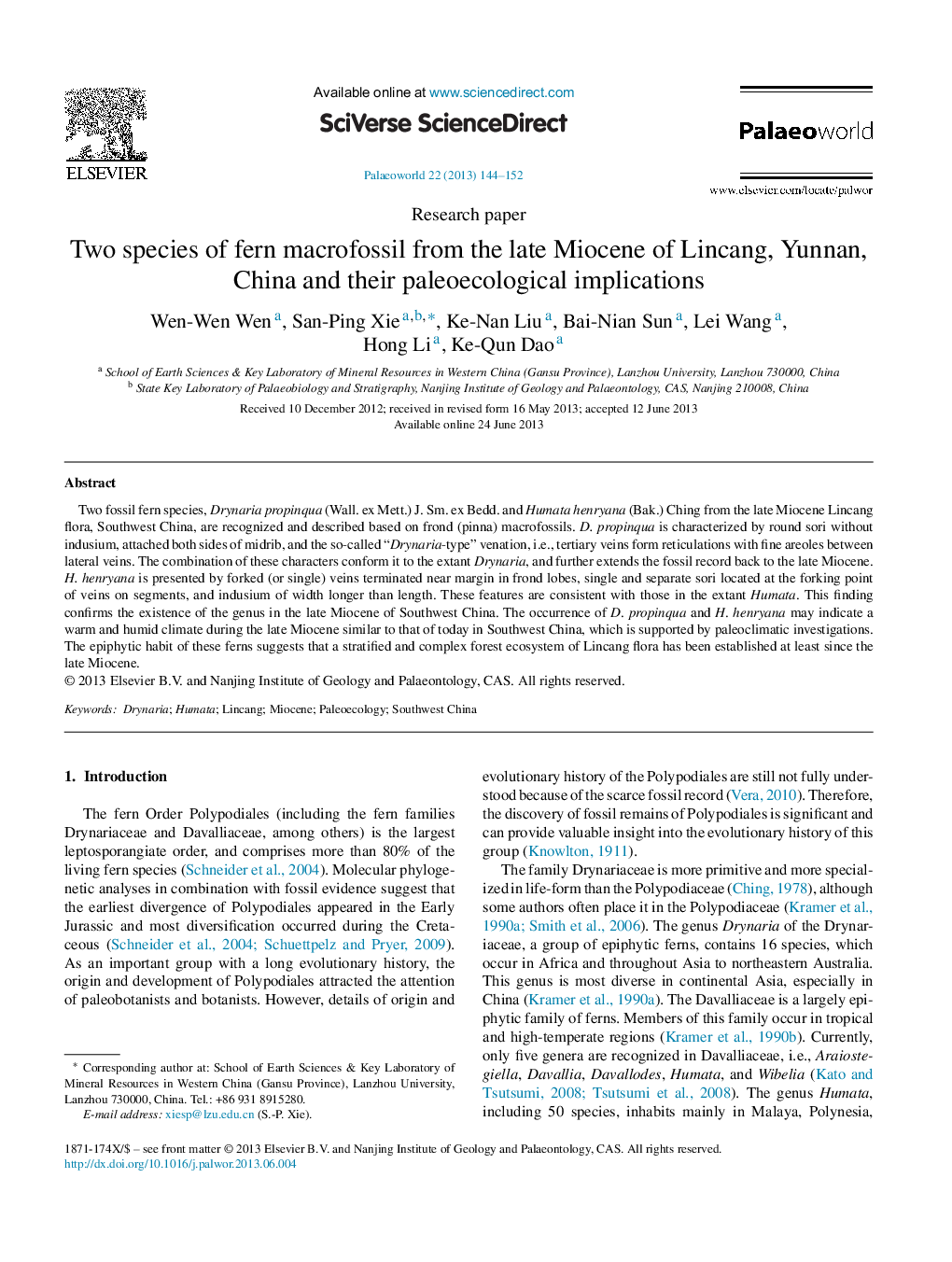| کد مقاله | کد نشریه | سال انتشار | مقاله انگلیسی | نسخه تمام متن |
|---|---|---|---|---|
| 4749692 | 1642277 | 2013 | 9 صفحه PDF | دانلود رایگان |
Two fossil fern species, Drynaria propinqua (Wall. ex Mett.) J. Sm. ex Bedd. and Humata henryana (Bak.) Ching from the late Miocene Lincang flora, Southwest China, are recognized and described based on frond (pinna) macrofossils. D. propinqua is characterized by round sori without indusium, attached both sides of midrib, and the so-called “Drynaria-type” venation, i.e., tertiary veins form reticulations with fine areoles between lateral veins. The combination of these characters conform it to the extant Drynaria, and further extends the fossil record back to the late Miocene. H. henryana is presented by forked (or single) veins terminated near margin in frond lobes, single and separate sori located at the forking point of veins on segments, and indusium of width longer than length. These features are consistent with those in the extant Humata. This finding confirms the existence of the genus in the late Miocene of Southwest China. The occurrence of D. propinqua and H. henryana may indicate a warm and humid climate during the late Miocene similar to that of today in Southwest China, which is supported by paleoclimatic investigations. The epiphytic habit of these ferns suggests that a stratified and complex forest ecosystem of Lincang flora has been established at least since the late Miocene.
Journal: Palaeoworld - Volume 22, Issues 3–4, December 2013, Pages 144–152
